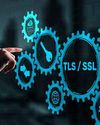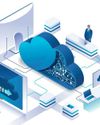
Digital adoption over the cloud by an enterprise can entail digital migration (which comprises re-hosting, re-configuration or re-platforming applications) or digital transformation (which is either refactoring or re-architecting native cloud solutions, or replacing native cloud components). But there is another way, called digital decoupling architecture, that organisations can also use for digitalisation.
Features of digital decoupling architecture
Decoupling data and application architecture: A strategy is adopted to decouple data architecture into reference data and transactional data. Reference databases remain on premises in legacy IT systems, and applications with transactional data are moved to the cloud.
DevTest adoption in the cloud: On an average, development and test (DevTest) environment usage is 40%-60% every year. Moving these environments to the cloud optimises DevTest infrastructure and monitoring costs, because you pay for only what you use.
Data lake adoption: Data lakes in the cloud are used for reconciliation, regulatory reports, and batch job processing (e.g., using AWS Glue Job).
Agile DevOps: This helps to automate the toolchain process.
These features of digital decoupling enable easier and quicker digital adoption as compared to costly solutions used in the digital transformation path.
Anatomy of microservices architecture
Microservices is a distinctive method of developing software systems that is extremely popular nowadays. Due to its scalability, this method is ideal for the web, mobile, and Internet of Things—or when you’re not sure what kind of devices you’ll need to support in an increasingly cloud-based future.
هذه القصة مأخوذة من طبعة October 2024 من Open Source For You.
ابدأ النسخة التجريبية المجانية من Magzter GOLD لمدة 7 أيام للوصول إلى آلاف القصص المتميزة المنسقة وأكثر من 9,000 مجلة وصحيفة.
بالفعل مشترك ? تسجيل الدخول
هذه القصة مأخوذة من طبعة October 2024 من Open Source For You.
ابدأ النسخة التجريبية المجانية من Magzter GOLD لمدة 7 أيام للوصول إلى آلاف القصص المتميزة المنسقة وأكثر من 9,000 مجلة وصحيفة.
بالفعل مشترك? تسجيل الدخول

Managing a Hybrid Cloud: An Overview
The hybrid cloud market is on a high, with businesses discovering its many benefits. Let's explore what it entails to adopt such a cloud model and why an organisation should consider moving to it.

"Openness challenges the traditional closed nature of hardware IPs to create standardised solutions"
In an interview with EFY's Yashasvini Razdan, Alex P. James, Dean of Academics at Digital University Kerala, argues that an open AI hardware ecosystem could democratise access to hardware design tools and IPs, much like the Linux movement did for software.

Meeting Special Education Needs with Open Source Software
Children and adults with special needs require special education. Cboard is free and open source software for special children, but a lot of work is still needed in this domain, especially in India.

A Guide to SSL 2.0: Security Flaws and Evolution to SSL 3.0
The importance of cybersecurity cannot be overstated. The SSL 2.0 handshake protocol plays a great role in ensuring data remains secure and does not reach the wrong hands. But it does have some weaknesses, and hence the emergence of SSL 3.0.

Trusted Platform Modules: Locksmith in the Basement?
Tech giants are embedding special chips into their systems to ensure your data stays safe, even if you lose your device.

Understanding Cluster Analysis through Python Libraries
Discover how Python libraries simplify data clustering for better business insights...

A Beginner's Guide to Cloud Computing
Cloud computing has grown exponentially since the early 2010s and there are no signs of its popularity waning anytime soon. This is because it offers benefits to developers, organisations and customers alike.

A Guide to Optimising Costs in the Cloud
Keeping cloud costs optimal is essential for the financial health of any enterprise. However, organisations encounter quite a few challenges when they migrate from on-premises data centres to the cloud using a lift-and-shift strategy. The Google Cloud Platform (GCP) helps to mitigate these challenges and optimise costs.

Using Microservices for Digital Decoupling Architecture
Microservices enhance the digital journey of an organisation in so many ways. They optimise costs, make software agile and scalable, and are of immense help when designing digital decoupling architecture for IT migration.

A Complete Guide to DevOps
Modern enterprises are looking at faster delivery of quality software and quick feedback from customers, among other things. This demands the integration of development and operations teams so that they collaborate and communicate better, also known as DevOps.